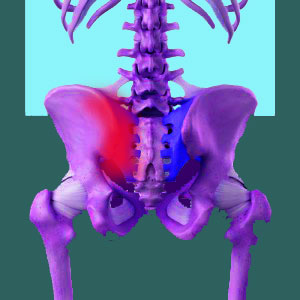
What is the prognosis for sacroiliac pain? Will most patients improve with time or get worse? How about the prognosis for particular forms of sacroiliac treatment? Which methods of care provide the best outcomes with the least substantial risks? These are all questions which we receive on a weekly basis at The Cure Back Pain Network.
It pleases us to know that these questions come from highly involved patients who have taken our advice to become more active in their healthcare decisions. One of the best ways to enjoy positive therapeutic results from any form of treatment is surely to be proactive in your diagnosis and treatment decisions. Passivity is usually the path towards misdiagnosis and failed care.
This dialog explains the prognosis for sacroiliac joint pain, as well as the expected outcome for many of the most common treatments, based on statistical fact. If you are a patient who wonders what the future holds for you with sacroiliac joint issues, then this is the perfect discussion for you.
Prognosis for Sacroiliac Pain Conditions
Sacroiliac pain might worsen, might improve and may ameliorate all together. This is because SIJ symptoms can come from several different sources and each causation is case-specific in its prognosis. Here are some general prognostic facts for the most common forms of sacroiliac pain:
Sacroiliitis is difficult to predict, since it can come from many individual sources.
Sacroiliac joint injury should improve with time and resolve completely when healing is complete. Physical therapy might assist organic healing in cases of severe injury.
Rare symptomatic forms of sacroiliac joint degeneration tends to worsen with time and may eventually require dramatic medical intervention.
Sacroiliac joint dysfunction should respond well to conservative care, but may worsen if ignored or if the true underlying causation is not a structural defect, but instead a result of poor posture or bodily ergonomics.
Ischemic sacroiliac pain tends to worsen and spread throughout different areas of the body, particularly in response to treatment. Ischemia is one of the most common causes of chronic pain that typically persists long-term, making life a misery.
Sacroiliac Pain Diagnostic Prognosis
Sacroiliac joint pain problems often defy attempts at diagnosis. In some cases, no structural explanation is observed, while in many other cases, pain is mistakenly blamed on incidental hip joint or lumbar spinal abnormalities. Since hip socket degeneration and lumbar spinal abnormities are basically universal in adults, the frequency of misdiagnosis of actual SIJ issues is extremely commonplace.
On the flip side of the same coin, some seeming SIJ pain syndromes actually exist due to hip or lumbar spinal causations. Thee cases will usually involve multiple failed treatments, often ending in unsuccessful sacroiliac fusion surgery before the mistake is noticed and rectified by entering the patient back into a new treatment process for the true hip or spinal causation once it is discovered.
In either case profile, the prognosis is not good, since no therapy will work well when it is directed at the wrong source of pain. This is both logical and clinically observed with increasing frequency in the chronic pain therapy arena, where misdiagnosis has become the primary problem facing all patients.
Prognosis for Sacroiliac Pain from Treatment
Given that the diagnosis is indeed correct, different treatments will provide a range of results for the full gamut of SIJ diagnoses:
Symptomatic care will usually help to reduce pain from conditions which will naturally resolve on their own, such as injury and some forms of minor ligamentous dysfunction. Chiropractic, massage, acupuncture and other forms of symptom-based care are all deemed to be moderately effective for these types of pain.
Exercise is useful in many cases of soft-tissue related sacroiliac dysfunction due to hypertensioning or hyperlaxity of the joint structure.
Disease-related SIJ symptoms, such as pain caused by ankylosing spondylitis and rheumatoid arthritis tend to worsen for a time and then level off. Extreme pharmaceutical therapy might help to limit progression of the disease both in the sacroiliac and throughout the body, but there are no cures offered using drug treatment.
Sacroiliac fusion surgery is considered largely effective for stabilizing compromised joints, as well as resolving chronic SIJ pain due to instability and some mechanical dysfunctions. However, a high rate of symptomatic recurrence in a different area of the body tends to point to mindbody causation, with SIJ structural abnormality being innocent and secondary to a true ischemic pain source.
Knowledge therapy demonstrates some of the best results for SIJ pain, regardless of the diagnosis. The prognosis for sacroiliac joint pain sufferers who embrace knowledge therapy is better than for all other forms of treatment. Since there are no risks and universal health benefits to be gained, it is surprising that more patients do not pursue this therapeutic path from day one of their pain.
Sacroiliac Joint Pain > Sacroiliac Diagnosis > Prognosis for Sacroiliac Pain





